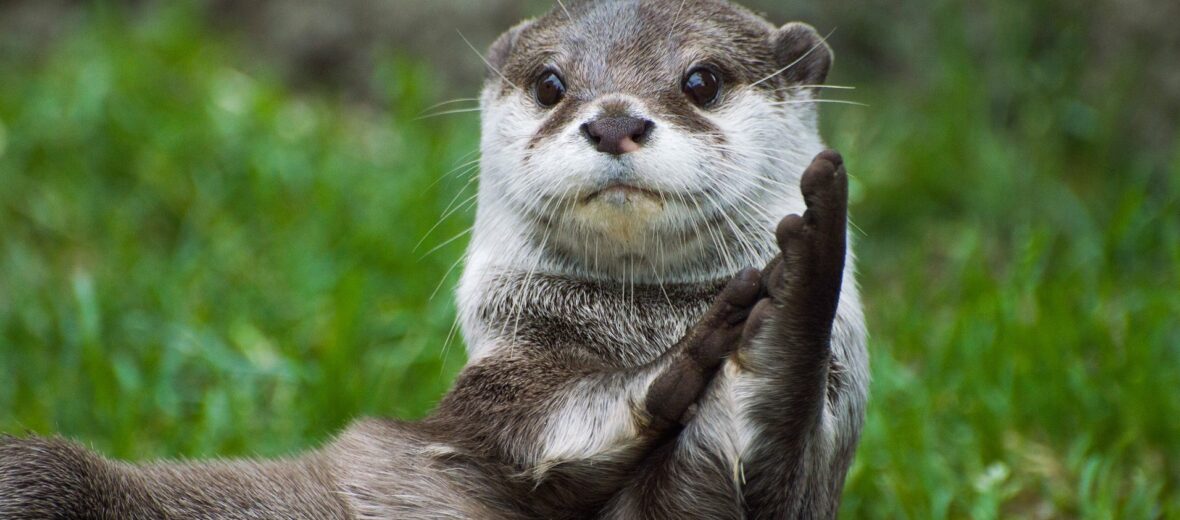
The Asian small-clawed otter is the smallest known otter species. Their hands and feet are only partially webbed and they have short claws. This aids in sensitivity to touch and a heightened dexterity, which helps them find food under rocks and in the mud. Small-clawed otters can be found in parts of India and Southeast Asia including the islands of Borneo, Java, Palawan, and Sumatra. They prefer freshwater wetlands like slow moving rivers, swamps, estuaries, irrigated rice fields, coastal lagoons, and even tidal pools. Due to habitat destruction and fragmentation at the hands of roads, as well as pollution, and poaching for the illegal pet trade these cute critters are listed as Vulnerable by the IUCN and their populations are decreasing.
First the Stats…
Scientific name: Aonyx cinereus
Weight: Up to 10 lbs.
Length: Up to 2 feet
Lifespan: Up to 16 years
Now on to the Facts!
1.) Being the most social of all the known otter species, these critters can live in groups of up to 20 individuals.
2.) Small-clawed otters are mostly nocturnal (active at night) and crepuscular (active at dawn and dusk). But they have been observed being diurnal (active during the day) as well.
3.) These otters constantly groom themselves and each other in order to maintain their fur’s insulation.
4.) Like all otters, they are excellent swimmers that use their hind legs and tail to propel themselves in the water.
5.) After swimming or eating, they will tend to scent mark by rubbing the sides of their faces and bodies against a variety of surfaces.
But wait, there’s more on the Asian small-clawed otter!
6.) Asian small-clawed otters are monogamous (mate for life).
7.) Females birth 1 – 6 pups after a 60 day gestation (pregnancy).
Did you know…?
In the Harry Potter books, Hermione has a patronus charm that is shaped like an otter.
8.) Mom and dad both help in the rearing of their young.
9.) They prey on crabs, mudskippers, fish, snakes, frogs, insects, mice, and rats.
10.) Each otter has its own scent that is unique to that otter. Like our fingerprints, no scent is known to be alike.
But wait, there’s still more on the Asian small-clawed otter!
11.) Otters are the only truly amphibious members of the weasel family.
12.) Snakes and crocodiles prey on these otters.
Did you know…?
Indian fishermen have actually trained otters to fish for them.
13.) Small-clawed otters produce up to 12+ sounds that are used to communicate all kinds of things, including greeting and warning of threats.
14.) Being intelligent is a known trait of otters. For instance, they know to leave a crab out in the sun in order to get its shell to crack, allowing for easy access to the tasty meat inside.
15.) Otters live on every continent, sans Antarctica and Australia.
Now a Short Asian Small-Clawed Otter Video!
Also, check out the Critter Science YouTube channel. Videos added frequently!
Want to suggest a critter for me to write about? Let me know here.




Leave a Reply